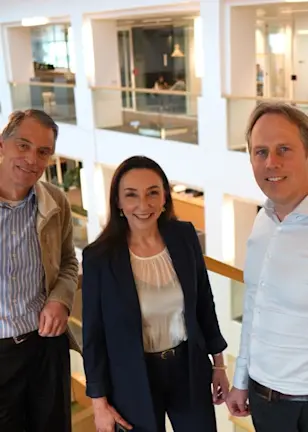Disclaimer Robeco Switzerland Ltd.
The information contained on these pages is solely for marketing purposes.
Access to the funds is restricted to (i) Qualified Investors within the meaning of art. 10 para. 3 et sequ. of the Swiss Federal Act on Collective Investment Schemes (“CISA”), (ii) Institutional Investors within the meaning of art. 4 para. 3 and 4 of the Financial Services Act (“FinSA”) domiciled Switzerland and (iii) Professional Clients in accordance with Annex II of the Markets in Financial Instruments Directive II (“MiFID II”) domiciled in the European Union und European Economic Area with a license to distribute / promote financial instruments in such capacity or herewith requesting respective information on products and services in their capacity as Professional Clients.
The Funds are domiciled in Luxembourg and The Netherlands. ACOLIN Fund Services AG, postal address: Leutschenbachstrasse 50, CH-8050 Zürich, acts as the Swiss representative of the Fund(s). UBS Switzerland AG, Bahnhofstrasse 45, 8001 Zurich, postal address: Europastrasse 2, P.O. Box, CH-8152 Opfikon, acts as the Swiss paying agent.
The prospectus, the Key Investor Information Documents (KIIDs), the articles of association, the annual and semi-annual reports of the Fund(s) may be obtained, on simple request and free of charge, at the office of the Swiss representative ACOLIN Fund Services AG. The prospectuses are also available via the website https://www.robeco.com/ch.
Some funds about which information is shown on these pages may fall outside the scope of CISA and therefore do not (need to) have a license from or registration with the Swiss Financial Market Supervisory Authority (FINMA).
Some funds about which information is shown on this website may not be available in your domicile country. Please check the registration status in your respective domicile country. To view the Robeco Switzerland Ltd. products that are registered/available in your country, please go to the respective Fund Selector, which can be found on this website and select your country of domicile.
Neither information nor any opinion expressed on this website constitutes a solicitation, an offer or a recommendation to buy, sell or dispose of any investment, to engage in any other transaction or to provide any investment advice or service. An investment in a Robeco Switzerland Ltd. product should only be made after reading the related legal documents such as prospectuses, annual and semi-annual reports.
By clicking “I agree” you confirm that you/the company you represent falls under one of the above-mentioned categories of addressees and that you have read, understood and accept the terms of use for this website.
Sustainable Investing
Green versus grey hydrogen
Hydrogen is no newcomer to energy or industrial markets and more than a hundred million tons of it is produced and used every year. But most of this is grey hydrogen, created using natural gas. While gas is not as polluting as coal, and is considered a ‘half-way house’ between higher-carbon fossil fuels and renewables, it still creates billions of tons of emissions.
Green hydrogen, in contrast, is produced via electrolysis where an electrical current is used to split water (H2O) into hydrogen (H2) and oxygen (O) molecules. When that electrical current is from renewable sources like solar or wind power, the process is carbon free.
Though hydrogen is natural and abundant and the idea of creating it from water simple, harnessing its potential at the scales needed for powering industries and economies is a challenge of massive proportions. Across its supply chain – from production, storage, transmission and distribution – green hydrogen still faces technical and environmental hurdles that translate into higher costs and lower supplies.
But these challenges are not insurmountable. As investments and incentives aimed at hydrogen technologies increase, breakthroughs will accelerate so that hydrogen’s decarbonizing potential can be unlocked and unleashed in time to halt global warming mid-century.
















